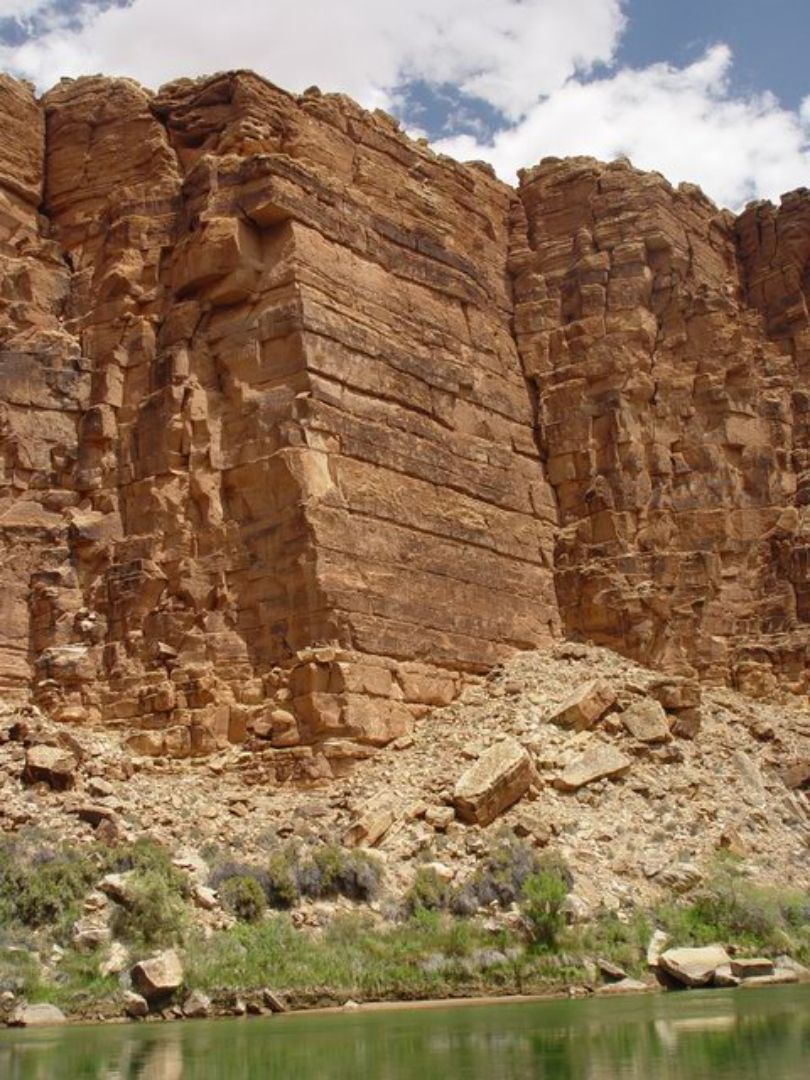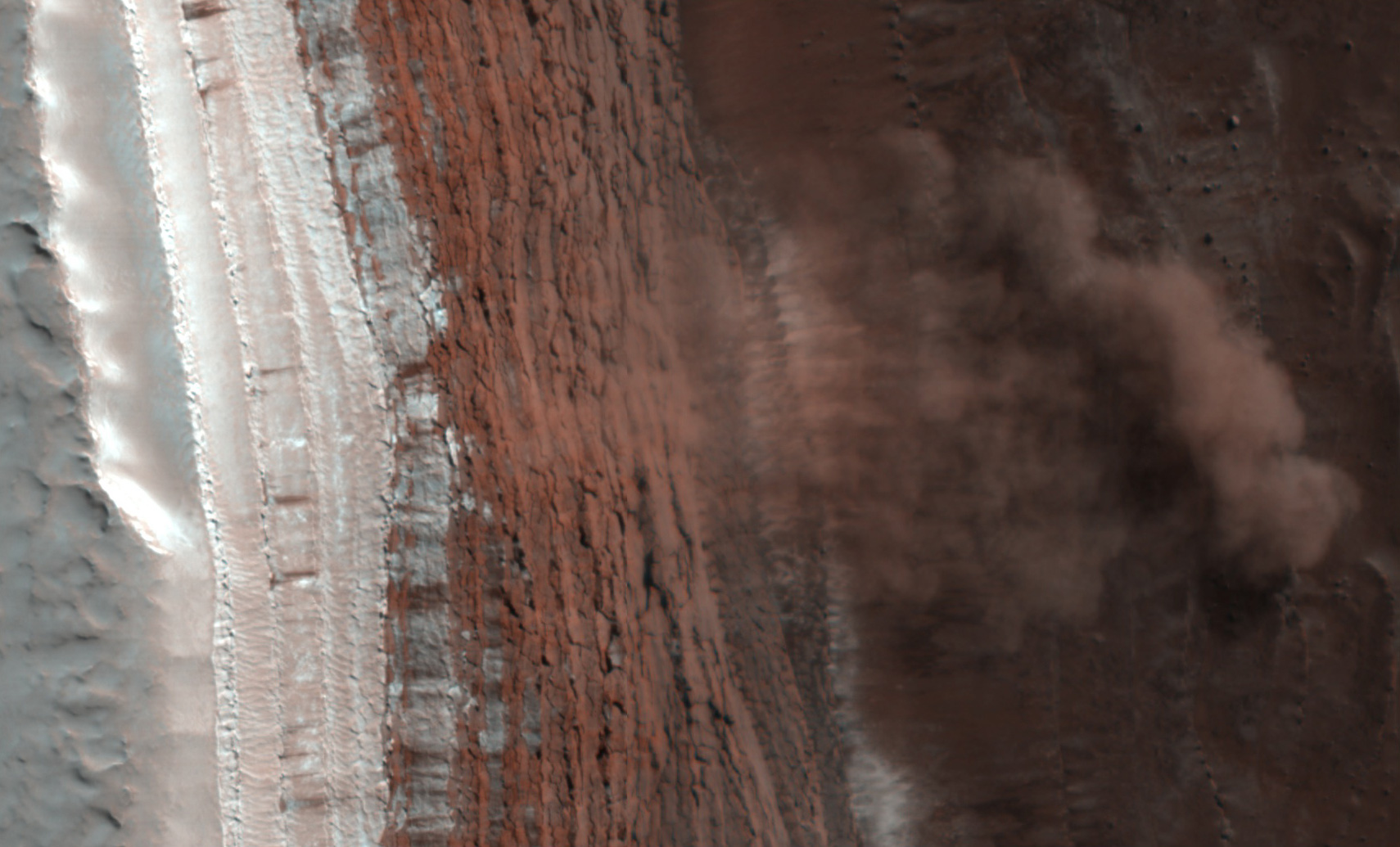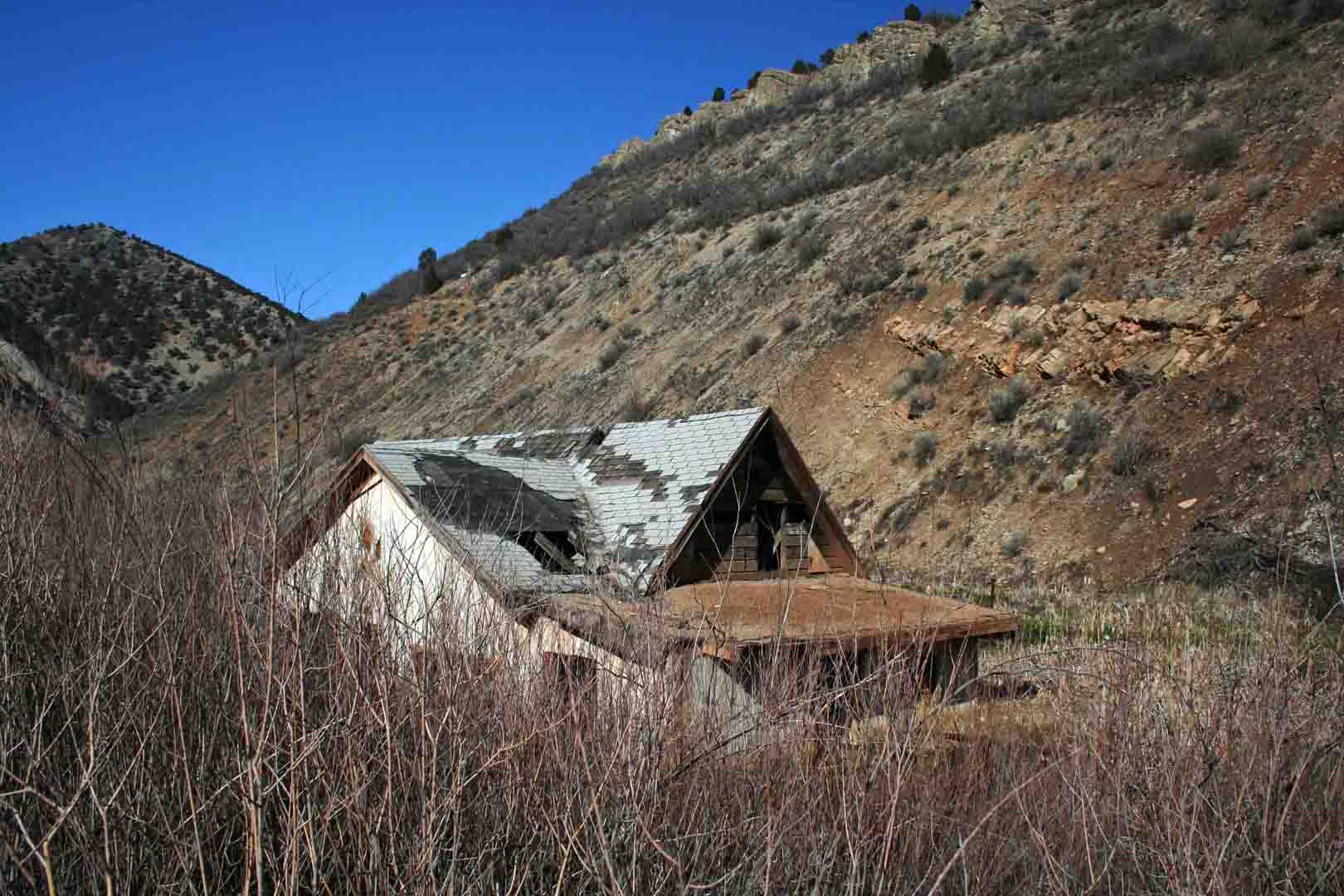Mass movement that occurs over a short period of time can sometimes result in quite spectacular changes to the landscape. Examples of this kind of rapid mass movement include:
- Rockfall: The fall of rock from a steep surface (i.e., cliff, mountainside) is known as a rockfall. Fallen material can range in size from small pebbles all the way up to extremely large boulders. The accumulation of fallen rock at the bottom of the steep surface is known as talus. A rockfall is the fastest kind of mass movement.
- Landslide: The rapid movement of rock and soil down a slope is known as a landslide. Landslides are fairly common on steep slopes, and often occur after periods of heavy precipitation. Earthquakes also frequently act as a trigger for landslides.
- Mudflow: A mixture of swiftly moving mud and water is known as a mudflow. Mudflows often occur in mountainous areas in which sediment has become rapidly saturated with water as a result of heavy precipitation. This water-saturated material has very little friction between sediment particles, and thus flows quite easily.
A special type of mudflow known as a lahar can occur after a volcanic eruption. A lahar is a mudflow consisting of volcanic debris and water that forms on the slopes of a volcano. (See Lesson F3 – Living With Volcanoes / The Hazards of Volcanoes for more information on lahars.) - Slump: Sometimes soil that is very cohesive will slide in large blocks down steep, concave-shaped slopes. Such a mass movement is known as a slump. Slumps are easily recognized by the curved marks that the sliding blocks of soil leave on the slope.
Not Just On Earth
Rapid mass movements of material have been detected on other planets in our solar system. Evidence of landslides has been photographed on both Venus and Mars.
The Mars Reconnaissance Orbiter spacecraft, orbiting at a height of 319 km (about 200 miles) above the surface of Mars, captured this image of mass movement on February 3, 2008.
Notable Landslides
As noted in the Travel Link about the Frank Slide, landslides can sometimes be quite large and can often have devastating effects.
This chart lists three landslides with special characteristics. Click on each location in order to see what the landslide looks like today.
| Location | Date | Comment |
| Mt. St. Helens, Washington | May 18, 1980 | This is the world’s biggest historic landslide with a slide volume of 2.8 km3 km (0.67 miles3. |
| Saidmarreh, Iran | 8,420 +/-120 years BCE | The Saidmarreh landslide is the world’s biggest known prehistoric landslide with a slide volume of approximately 20 km3(4.8 miles3. |
| Thistle, Utah | April, 1983 | This was the most expensive landslide in U.S. history to fix. It cost over $400 million dollars to fix the damage. The town of Thistle, today a ghost town, was almost completely destroyed. |



